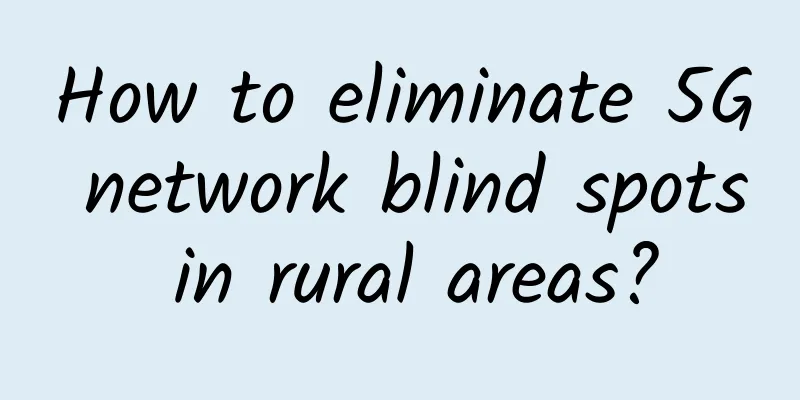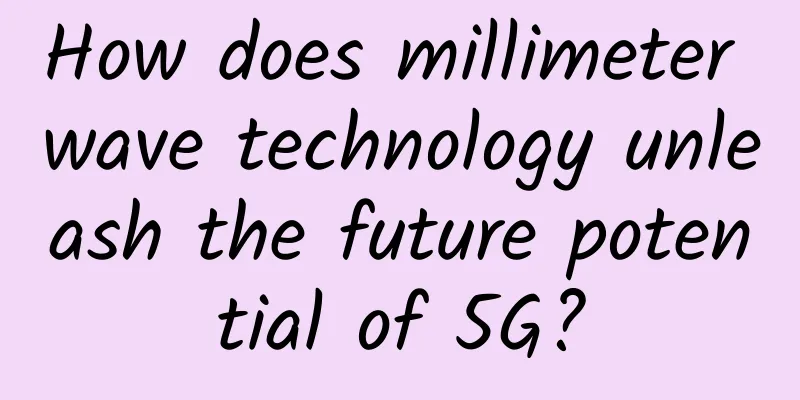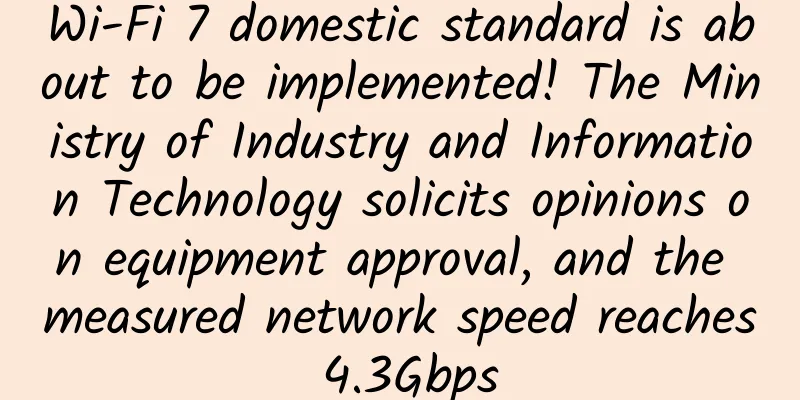If you are in the communications industry, you will be out if you don’t understand these nine 5G issues

|
China's 5G era has arrived as promised! The following 10 questions are the most basic of 5G. If you don't understand them, to be honest, it's really embarrassing to say that you are in the communications industry! 1. What is 5G? A new generation of revolutionary technology emerges in global mobile communications every decade.
2. What are the three major scenarios of 5G? The three major application scenarios of 5G will fully support the innovative development of new models and new formats. In 2015, the International Telecommunication Union (ITU) defined three major application scenarios for 5G: Enhanced Mobile Broadband (eMBB) is mainly aimed at the explosive growth of mobile Internet traffic, providing mobile Internet users with a more extreme application experience; Ultra-reliable low-latency communication (URLLC) is mainly aimed at vertical industry applications such as industrial control, telemedicine, and autonomous driving that have extremely high requirements for latency and reliability; Massive machine-type communications (mMTC) are mainly aimed at application needs such as smart cities, smart homes, and environmental monitoring that aim at sensing and data collection. 3. What are the key performance indicators of 5G? Compared with 4G, 5G application scenarios are richer and key performance indicators are more diversified. It is proposed that 5G has eight key performance indicators, namely user experience rate, traffic density, peak rate, connection density, air interface delay, mobility, spectrum efficiency and energy efficiency. The three most prominent performance indicators are user experience rate, air interface delay and connection density, which are as follows: 5G user experience rates can reach 100Mbps to 1Gbps, more than 10 times that of 4G; The air interface latency is as low as 1ms, which is 1/10 of that of 4G; The connection density can reach 1 million connections/square kilometer, which is more than 50 times that of 4G under the same spectrum resource conditions; 5G achieves a new leap in network performance, opening up a new era of interconnectedness of all things and bringing endless imagination. 4. What new experiences can 5G bring to ordinary users? For ordinary users, they can enjoy a variety of mobile Internet services through the 4G network. However, due to the limitations of 4G speed and latency, the experience of services such as virtual reality (VR), augmented reality (AR), and autonomous driving is not good. In crowded areas such as subways, train stations, and squares, the network speed decreases and the picture freezes. Compared with 4G, 5G has the characteristics of ultra-high speed, ultra-low latency, and large capacity, and will give birth to a new round of innovative development of mobile Internet services. With the widespread application of 5G, everything from wearable devices and smart homes to the infrastructure of smart cities will be connected to the 5G network to achieve the interconnection of all things. Based on the 5G network, you can see a doctor remotely and organize a holographic video conference without leaving your home. When you are away from home, you can have a 3D video call with your loved ones anytime and anywhere, remotely control the air conditioner and robots at home, etc. 5G will bring great convenience and more surprises to our daily lives. 5. What is the progress of 5G technology standards? The 5G international standard is formulated by the Third Generation Partnership Project (3GPP), which is composed of seven communications standardization organizations from China, the United States, Japan, South Korea, Europe, and India. It has formulated international standards such as 3G, 4G, and 5G. In June 2018, 3GPP released the first version of the globally unified 5G international standard. The 5G international standard supports two types of architectures: NSA (non-standalone networking) and SA (standalone networking). In the NSA architecture, wireless technology adopts the 5G standard, while the core network still adopts the 4G standard, mainly supporting 5G enhanced mobile broadband services. In the SA architecture, both wireless and core networks adopt 5G standards, support enhanced mobile broadband and basic low-latency and high-reliability services, and support network slicing, edge computing and other functions. 3GPP is developing the second version of the 5G international standard, which is scheduled to be released in March 2020. This version will better support enhanced application scenarios in industries such as the Internet of Vehicles and the Industrial Internet. 6. What are the advantages of 5G wireless technology compared to 4G? In terms of system architecture, 5G adopts a flexible new system design, such as flexible parameters and frame structure, to support three major application scenarios. In terms of key technologies, in order to support high-speed transmission and better coverage, 5G uses LDPC (low-density parity check code), Polar's new channel coding scheme, and more powerful large-scale antenna technology. In order to support low latency and high reliability, 5G uses short frames, fast feedback, and multi-layer/multi-station data retransmission technologies. In terms of frequency bands, 5G has designed a unified technical solution for medium and low frequency bands and high frequency bands. The medium and low frequency bands meet the coverage and capacity requirements and support 100MHz basic channel bandwidth. The high frequency band meets the need to increase capacity in hot spots and supports 400MHz basic channel bandwidth. 7. Compared with 4G, what breakthroughs does 5G core network technology have?
8. Does 5G have TDD and FDD modes? TDD (Time Division Duplex) means sending and receiving data at different times on the same frequency. FDD (Frequency Division Duplex) means sending and receiving data at different frequencies. TDD only occupies one frequency, while FDD needs to occupy two paired frequencies. 5G supports two duplex modes, TDD and FDD, and the technical solutions of the two are basically the same. Since the 5G channel bandwidth is as high as 100 MHz, it is difficult to find paired frequency resources. Currently, the global 5G frequency is mainly TDD mode, and commercial 5G networks all use TDD mode. 9. What are the challenges that 5G network construction poses to the optical fiber bearer network? The main challenges facing 5G bearer networks are ultra-large bandwidth, ultra-low latency, and joint management and control. In order to solve the problem of ultra-large bandwidth data transmission in base stations, network capacity needs to be increased. The transmission bandwidth required for 5G medium and low frequency base stations is 2~5Gbit/s, which is about 10-15 times that of 4G base stations. The bandwidth of base station access ring lines in my country needs to be rapidly expanded or newly built from the existing large 1Gbit/s and small 10Gbit/s networks to 50Gbit/s or even 100Gbit/s; the core and aggregation layer network bandwidth needs to meet the Tbit/s capacity requirements by building multiple 100Gbit/s, 200Gbit/s or even 400Gbit/s systems. To ensure ultra-low latency services, it is necessary to strengthen the optimization of optical fiber network topology. Services such as Internet of Vehicles, smart grids, and industrial Internet have put forward more stringent index requirements for end-to-end low latency performance. The latency index of 5G bearer network is an ultra-low latency requirement of several us to dozens of us. It is necessary to combine various business application scenarios, strengthen network topology planning and latency index allocation, etc. to meet the ultra-low latency challenge. In order to support services such as network slicing, joint management and control are required. 5G proposes the full life cycle management and control requirements for network slices in three types of business scenarios. Therefore, the 5G bearer network must not only support the soft and hard isolation capabilities of bandwidth resources on the data plane, but also support the joint management and control architecture and standard northbound interface of 5G business orchestration on the management and control plane, and realize the network slice management and control and performance monitoring operation service capabilities for emerging businesses such as vertical industries. |
<<: In the 5G era, closed systems are also dangerous. There is no chance to upgrade or patch.
>>: Analysis | A Deeper Look at Apache Flink’s Network Stack
Recommend
The Ministry of Industry and Information Technology introduced a spectrum auction mechanism, which is a new model for 5G spectrum allocation.
Recently, my country promulgated the newly revise...
CloudCone: $9.99/year KVM-single core, 512M memory, 20G hard disk, 2TB/1Gbps, Los Angeles MC data center
CloudCone is a sub-brand of Quadcone. It was foun...
Opening up the 6GHz frequency band: a new attempt with an uncertain future
On April 23, the Federal Communications Commissio...
The difficulty of operation and maintenance has reached a new level - it does not exist!
What is the data center most afraid of? Power out...
Sharktech: Los Angeles 1Gbps unlimited traffic high-defense server starting at $59/month, 10Gbps unlimited traffic server starting at $259/month
Sharktech, which we call the Shark Data Center (o...
The TCP three-way handshake is well-known, but what about unexpected situations? What about packet loss? What about intentional non-reply of ACK?
[[312203]] 1. Preface When we talk about the TCP ...
The significance of optimizing the supply chain network design of enterprises
While the concept may seem simple in theory, the ...
2018 F5 China Application Service Summit Forum was successfully held
The "F5 China Application Service Summit For...
Network Slicing "Hot Pot Theory": Same Pot, Different Dreams
In the dog days of summer, when people are "...
Markets and Markets: 5G enterprise market size will reach US$10.9 billion in 2027
According to the latest market research report re...
We use WiFi every day. What is the relationship between WiFi and wireless network? This article is enough for you to understand!
1. Development History: 2. Wireless network class...
This year's Internet Light Expo has upgraded its black technology: these new gadgets are quite cool
On November 6, the 5th World Internet Conference ...
How Industry 4.0 and 5G will change supply chain visibility
As the pandemic highlights the serious inefficien...
Migrate WHM/cPanel data to DA (DirectAdmin)
I shared an article about migrating from CP to DA...
Resize the file system in Linux: resize2fs
resize2fs is a command used to expand or shrink t...









